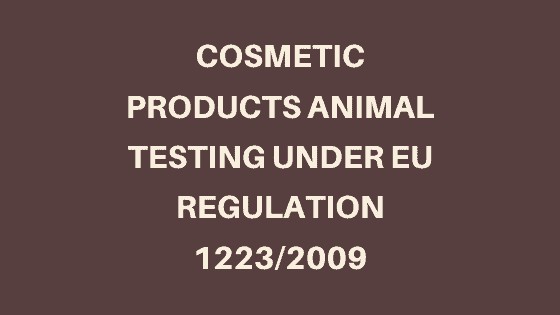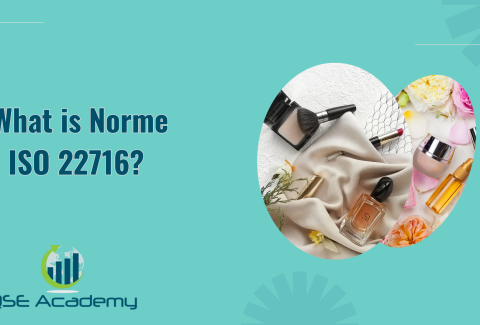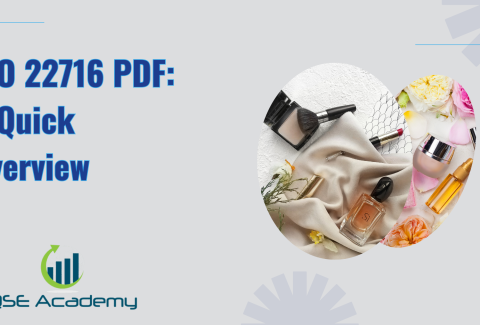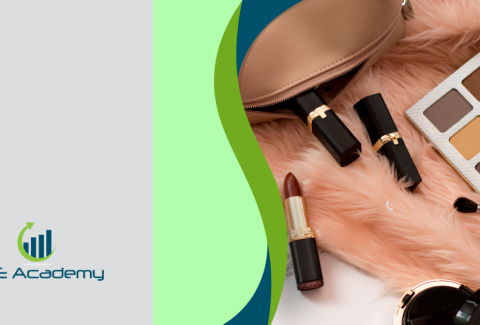EU Cosmetics Regulation on animal testing Under EU 1223/2009 Regulation
EU Cosmetics Regulation on animal testing Under EU 1223/2009 Regulation
When we talk about EU animal testing regulations, we’re diving into an essential part of Europe’s commitment to consumer safety and animal welfare in the cosmetics industry. EU Regulation 1223/2009 has been a game-changer for the way cosmetics are tested in Europe, with a clear stance against animal testing. If you’ve ever wondered why your favorite beauty products are labeled as “cruelty-free,” it’s because of this regulation.
In simple terms, EU animal testing regulations under Regulation 1223/2009 are all about banning the use of animals in cosmetic testing, both for finished products and the ingredients used to make them. This means that no cosmetic product sold in the EU can be tested on animals, which is a huge win for animal rights advocates and anyone concerned about the ethical production of their beauty products.
The goal of these regulations is twofold: to ensure that the cosmetics on the market are safe for consumers, and to promote a more ethical, cruelty-free approach to the beauty industry. So, not only does this regulation protect animals, but it also makes sure that the safety of the products is backed by science and proven through alternative, non-animal methods.
But, how does this all work in practice? Let’s take a closer look at what EU animal testing regulations actually require and why they matter so much to both manufacturers and consumers.
The Ban on Animal Testing for Cosmetics
One of the core principles of EU animal testing regulations is the total ban on testing finished cosmetic products on animals. This means that before a product can be sold in the EU, it must undergo safety testing that doesn’t involve any animal testing. It’s part of the larger movement to find ethical, non-invasive ways to ensure product safety.
This regulation also extends to ingredients used in cosmetics. Even if a company imports a cosmetic product from a country outside the EU, they must ensure that the product and its ingredients have not been tested on animals. The EU is pretty strict about this, and it’s one of the reasons why many global cosmetic brands are shifting toward cruelty-free formulations and testing alternatives.
Safety Without Animal Testing
Now, you might be thinking, “How can we be sure the products are safe without animal testing?” The good news is that there are plenty of scientifically backed alternative testing methods that meet the safety requirements of EU animal testing regulations. These alternatives, such as in vitro testing (which uses human cells in the lab) and computer modeling, can effectively predict how a product will perform on human skin or hair without harming any animals.
The beauty of this approach is that it’s not only ethical but also highly effective. In fact, many of these non-animal methods can be more accurate, faster, and even less expensive than traditional animal testing. So, it’s a win-win for everyone—humans, animals, and the companies that produce cosmetics!
In the next section, we’ll explore some of the specific provisions within EU animal testing regulations to better understand how they’re implemented in practice and the responsibilities of manufacturers to comply with them. Stick around!
Key Provisions of EU Animal Testing Regulations
Now that we’ve got the basics down, let’s dive into the key provisions of EU animal testing regulations under Regulation 1223/2009. These provisions are the rules that manufacturers, importers, and even sellers need to follow to stay in compliance with the EU’s cruelty-free standards. Whether you’re in the cosmetics business or just curious about the behind-the-scenes workings, it’s important to understand what these regulations actually entail.
The Total Ban on Animal Testing
The most significant provision of EU animal testing regulations is the total ban on animal testing for finished cosmetic products. This means that no cosmetic product can be tested on animals, whether it’s for safety, effectiveness, or quality control, once the product is formulated. If a company wants to market a product in the EU, they can’t rely on animal testing to prove that their product is safe for use.
But it’s not just finished products that are covered. The EU animal testing regulations also apply to the ingredients used in cosmetics. If a manufacturer or brand wants to import or sell a product in the EU, they need to ensure that the ingredients themselves were not tested on animals. So, it’s a complete ban on animal testing across the board when it comes to cosmetics.
Non-Animal Testing Methods: A Legal Requirement
So, what does this mean for manufacturers who still need to prove that their products are safe? Thankfully, EU animal testing regulations allow for a range of alternative testing methods to ensure product safety without harming animals. The EU has been a strong advocate for these alternative methods, which include in vitro testing, computer modeling, and other human-relevant techniques. These methods are now not just encouraged – they’re the only legally acceptable ways to test products and ingredients for safety.
- In vitro testing involves testing substances on human cells or tissues in a lab setting, mimicking how the product would interact with human skin or other body systems. It’s a great way to predict how a product will react on humans without using animals.
- Computer modeling and simulation testing are another way to assess product safety. These methods use algorithms and data from human biology to predict how a product will perform, providing reliable results without needing to use live subjects.
These non-animal methods are increasingly being accepted and refined, making them the go-to solutions in the beauty industry. In fact, many companies have already made the switch to cruelty-free alternatives and are seeing great results. The EU animal testing regulations not only allow these methods but actively encourage their use.
The Role of the Responsible Person
One of the key provisions in EU animal testing regulations is the designation of a Responsible Person. The Responsible Person is someone who is legally accountable for ensuring that all aspects of EU Regulation 1223/2009 are met, including compliance with animal testing regulations. This person could be a company executive, a compliance officer, or a consultant, but they must be based within the EU.
The Responsible Person has to ensure that all products sold in the EU comply with EU animal testing regulations. This includes keeping track of all the necessary documentation, proving that neither the finished product nor its ingredients have been tested on animals. If any testing is done outside the EU, the Responsible Person must make sure that the testing complies with the EU’s standards, ensuring that the animal testing ban is upheld.
Penalties for Non-Compliance
So, what happens if a company doesn’t comply with EU animal testing regulations? The EU takes violations seriously. If any products are found to have been tested on animals or if they fail to meet the regulatory standards for safety testing, those products can be banned from the market, and the company may face penalties. These could include fines or the suspension of product sales until the issue is corrected.
It’s not just about following the rules to avoid penalties – it’s about being part of a global movement toward a more ethical and sustainable beauty industry. Companies that comply with EU animal testing regulations are showing that they care about both their customers and animal welfare. This is something that consumers increasingly value, so being compliant with these regulations is more than just a legal necessity – it’s also a way to build trust with your audience.
To wrap up, the key provisions of EU animal testing regulations are all about eliminating animal testing in the cosmetics industry and promoting the use of ethical, human-relevant testing alternatives. These provisions ensure that cosmetics sold in the EU are safe for consumers while also protecting animal welfare. By embracing non-animal testing methods and designating a Responsible Person to oversee compliance, companies can stay on the right side of the law and contribute to a cruelty-free future for cosmetics.
Next, we’ll take a look at how the shift to non-animal testing methods is not only helping animals but also driving innovation in the cosmetics industry. Stay tuned!
The Shift to Non-Animal Testing: How It’s Impacting the Cosmetics Industry
The beauty industry is constantly evolving, and one of the most exciting changes in recent years has been the shift to non-animal testing methods. Thanks to the EU animal testing regulations under Regulation 1223/2009, the cosmetics world is moving away from outdated and unethical animal testing in favor of more humane, innovative, and scientifically advanced alternatives. But how exactly is this shift impacting the cosmetics industry, and why is it such a big deal?
A More Ethical Industry
First off, let’s talk about the ethical side of things. The EU animal testing regulations have made a huge impact by not only banning animal testing but also encouraging companies to find alternatives that are less cruel. As awareness grows about the suffering animals endure during testing, consumers are becoming more conscious of where their beauty products come from and how they were made. In fact, many shoppers now actively seek out cruelty-free brands and are willing to pay a premium for products that are certified as free from animal testing.
This ethical shift is helping to transform the cosmetics industry, making it more aligned with the values of consumers who care about animal welfare. And it’s not just about doing the right thing – there’s a growing demand for non-animal testing methods, and companies that fail to embrace this change may find themselves falling behind.
The Rise of Non-Animal Testing Methods
Thanks to EU animal testing regulations, the cosmetics industry has been forced to get creative when it comes to safety testing. Animal testing is no longer the go-to solution; instead, the industry has turned to alternative testing methods that don’t rely on animals, but are still scientifically sound and reliable.
Let’s break down some of the main non-animal testing methods that are making waves in the industry:
- In Vitro Testing: This is one of the most popular alternatives to animal testing. In vitro testing uses human cells and tissues in laboratory settings to test how a product or ingredient reacts. By mimicking human biology in a controlled environment, this method provides results that are more relevant and accurate than animal testing. Plus, it’s much more humane!
- Computer Modeling (In Silico): If you’ve ever used a predictive tool on your phone or computer, you’ve seen a form of computer modeling in action. In the cosmetics world, this method involves using sophisticated software to simulate how ingredients or products will interact with human skin, hair, or eyes. These digital models can predict reactions like irritation or allergic responses without any need for animal subjects. It’s not only a cruelty-free solution but also one that can be quicker and more cost-effective than traditional methods.
- Human Relevance Testing: This is a catch-all term for methods that use human-derived materials or simulations to test products. From using 3D skin models to patch testing on human volunteers, these methods help provide safety data that’s directly relevant to how the product will affect real human skin.
As you can see, non-animal testing methods aren’t just a trend; they are shaping the future of the industry. What’s even more exciting is that these alternatives are not just meeting the EU animal testing regulations – they’re often proving to be more reliable, accurate, and faster than old-fashioned animal testing. So, everyone wins!
The Innovation Boom in Cosmetics
Thanks to the pressure of EU animal testing regulations, companies have had to invest more in research and development to create and refine these alternative methods. And guess what? It’s led to some pretty amazing innovations in the cosmetics industry. Companies are now developing cutting-edge technologies and techniques that weren’t even possible a few years ago.
For instance, in vitro testing is no longer just about basic cell cultures; it’s becoming more advanced with 3D models that mimic the skin’s layers and functions. These models can now simulate skin aging, UV damage, and even the effects of pollution on the skin – all without involving animals. These advancements are not only helping companies meet the EU animal testing regulations, but they’re also enabling them to make better, more effective products for consumers.
Additionally, computer modeling is becoming more precise, with better algorithms that predict how a product will react with different skin types or under different conditions. This means that brands can test a wider variety of formulations and ingredients in a fraction of the time it would take with animal testing.
A Competitive Advantage for Brands
As the demand for cruelty-free products grows, brands that embrace non-animal testing methods are finding themselves in a prime position. In fact, many cosmetic brands now proudly display “cruelty-free” labels or certifications from organizations like Leaping Bunny or PETA to attract ethically-conscious consumers. By complying with EU animal testing regulations and using alternative testing methods, these companies not only show their commitment to animal welfare, but they also position themselves as leaders in the rapidly evolving beauty industry.
Consumers are more informed than ever, and they’re actively choosing to support brands that align with their values. For cosmetics brands, embracing non-animal testing isn’t just about compliance – it’s a way to build trust, enhance brand loyalty, and tap into a growing market of eco-conscious buyers.
The shift to non-animal testing methods under EU animal testing regulations is truly reshaping the cosmetics industry. It’s pushing brands to innovate, think outside the box, and, most importantly, prioritize ethics without compromising safety or effectiveness. The good news is that this shift is only gaining momentum. As more companies adopt these methods and consumers demand more transparency, we’re moving towards a future where cruelty-free beauty products are the norm – and that’s a beautiful thing for everyone involved.
Next, we’ll explore how compliance with EU animal testing regulations helps ensure that your cosmetic brand stays on track, including some tips for manufacturers who want to make the transition to cruelty-free testing. Stay tuned!
Compliance with EU Animal Testing Regulations: What You Need to Know
So, you’re ready to jump on board and make sure your cosmetic products are compliant with EU animal testing regulations. Whether you’re a new brand or an established one, understanding how to stay in line with these rules is essential for staying competitive and ethical in the market. Let’s go through what you need to do to ensure that your products are compliant with the EU animal testing regulations under Regulation 1223/2009.
Understanding Your Responsibilities as a Manufacturer
First things first: As a manufacturer, it’s your responsibility to make sure that neither your products nor the ingredients in them have been tested on animals. This is a legal requirement under the EU animal testing regulations, so it’s not something you can overlook if you plan on selling in the EU. But how do you prove that you’re compliant?
It all starts with keeping clear records and documentation. You need to ensure that you have valid safety data to back up the claim that your products haven’t been tested on animals. This includes things like the Cosmetic Product Safety Report (CPSR), which outlines the safety of your product and its ingredients. The CPSR must include information proving that alternative testing methods, like in vitro or computer modeling, were used instead of animal testing.
The Role of the Responsible Person
One of the most important elements in ensuring compliance with EU animal testing regulations is the role of the Responsible Person (RP). The RP is the individual or company designated to ensure that all aspects of Regulation 1223/2009, including the animal testing regulations, are met.
This person or organization must be located within the EU, and their job is to make sure that the product meets all the required safety, testing, and labeling standards. When it comes to animal testing regulations, the Responsible Person is the one who verifies that no animals were harmed during the testing process and that the right alternatives were used.
If you’re the manufacturer, you need to make sure the Responsible Person is well-informed and involved in overseeing the entire process of compliance. This includes ensuring that every product meets the EU animal testing regulations and is backed by appropriate testing data.
The Importance of Non-Animal Testing Alternatives
As we’ve seen, non-animal testing methods are a central part of EU animal testing regulations, and these methods must be used instead of traditional animal testing for all cosmetic products sold in the EU. So, how do you prove that you’re following these guidelines?
To comply with EU animal testing regulations, you’ll need to make use of alternative testing methods such as in vitro testing or computer modeling. If your product or ingredients were tested using animals at any point, you would be in violation of the regulation. This is why many brands are now switching to cruelty-free testing methods to stay compliant and align with consumer expectations.
For example, in vitro testing involves using human cells or tissues to test how a product will react on human skin. Computer modeling helps predict how products interact with skin or eyes using simulations, offering a cruelty-free and scientifically accurate way to test safety.
It’s essential to document how these methods were used and make sure that all your testing is done according to the best practices that EU animal testing regulations support. Having these methods in place is not only a legal requirement but also a huge step toward aligning your brand with ethical and scientific progress.
Penalties for Non-Compliance with Animal Testing Regulations
So, why is compliance so important? Well, there are penalties for not adhering to EU animal testing regulations, and they can be pretty serious. If a company is found to be in violation of these rules, the product in question can be banned from the EU market. This means that all the hard work, time, and money spent creating the product could go to waste, along with your brand’s reputation.
In addition to product bans, companies could face fines and legal actions for non-compliance. More than just avoiding penalties, staying compliant with EU animal testing regulations helps protect your brand’s image, showing your customers that you care about animal welfare and the safety of your products.
Key Takeaways for Compliance
- Use Non-Animal Testing: Always opt for alternative testing methods like in vitro testing or computer modeling.
- Appoint a Responsible Person (RP): Ensure that a dedicated RP is handling compliance with EU animal testing regulations.
- Keep Detailed Records: Ensure you have all the required documentation, like the Cosmetic Product Safety Report (CPSR), to prove compliance.
- Stay Informed: Regulations can evolve, so always stay up-to-date with any changes to EU animal testing regulations to avoid any compliance issues.
In summary, ensuring compliance with EU animal testing regulations under Regulation 1223/2009 is all about embracing ethical testing practices, maintaining clear documentation, and being proactive in your approach to animal welfare. By adhering to these rules, you not only stay legally compliant but also earn the trust of your consumers, who are increasingly looking for cruelty-free products.
Next, we’ll take a look at the consequences of non-compliance, and how breaking the rules could affect your brand. Stay tuned!
The Consequences of Non-Compliance with Animal Testing Regulations
Now that we’ve covered the basics of EU animal testing regulations, it’s time to talk about something that’s just as important: what happens if a company doesn’t comply with these rules. While it might seem like a lot of effort to stay on top of animal testing regulations, the consequences of failing to do so can be pretty serious. So, let’s take a closer look at the potential risks and how they could affect your brand.
Product Bans and Market Withdrawal
The most obvious consequence of non-compliance with EU animal testing regulations is that your product could be banned from the market. Imagine all the hard work, money, and time you’ve invested in getting your product ready for sale, only for it to be pulled from the shelves because it doesn’t meet the cruelty-free standards set by the EU.
A product ban doesn’t just mean that the product is no longer available for purchase. It means that you’ll need to go back to the drawing board, fix the compliance issues, and submit the product for re-evaluation. This process can be costly, time-consuming, and damage your reputation in the marketplace. Customers may lose trust in your brand, and that’s not something that’s easy to rebuild.
Fines and Legal Penalties
In addition to having your product removed from the market, failing to comply with EU animal testing regulations can result in fines. These fines can vary depending on the severity of the violation, but they can add up quickly. Companies that repeatedly fail to adhere to the regulations may face even higher penalties, which could be financially devastating, especially for smaller businesses.
Even more concerning, non-compliance could lead to legal action. If consumers or competitors file complaints, you could be involved in lengthy and costly legal battles. This not only drains resources but also diverts your attention from growing your brand. Plus, legal issues can tarnish your reputation in ways that fines alone might not.
Damage to Brand Reputation
One of the most valuable things you can build as a business is your brand reputation. In today’s world, consumers are more aware than ever of ethical issues surrounding product testing. If a brand is caught violating EU animal testing regulations, it can quickly become the subject of negative publicity. Social media, blogs, and news outlets can spread the word about a company’s failure to comply, and this can turn potential customers away in droves.
Remember, consumers are increasingly making purchasing decisions based on the ethical values of the brands they buy from. If you’re found to be using animal testing or not following the EU animal testing regulations, it can seriously hurt your credibility. That’s why it’s crucial to always stay compliant—not just to avoid penalties, but to maintain the trust of your customers.
Loss of Consumer Trust
Consumers today are more informed than ever about where their products come from and how they’re made. More and more shoppers are actively looking for cruelty-free products and are willing to pay a little more for them. If your brand is found to be violating EU animal testing regulations, you could lose the loyalty of your customer base.
Once trust is lost, it’s tough to win back. Even if you fix the problem and start following the rules, consumers may hesitate to trust your brand again. And let’s face it—no one wants to spend money on products that go against their ethical beliefs, so losing that trust can have long-term effects on your sales.
Long-Term Impact on Business Growth
All of the consequences we’ve talked about—product bans, fines, legal penalties, and reputation damage—can have a lasting impact on your business. The longer it takes to resolve compliance issues, the longer you’re out of the market. During that time, competitors who are following EU animal testing regulations will continue to thrive, potentially taking the market share you could have had.
For new brands trying to break into the market, non-compliance can be a huge roadblock. In a competitive space like cosmetics, getting knocked off course by compliance issues could delay or even derail your growth plans.
How to Avoid These Consequences
Now that we know the potential risks of non-compliance with EU animal testing regulations, let’s talk about how to avoid them. The good news is that staying compliant is totally doable! Here are a few steps you can take to ensure your products stay on the right side of the law:
- Use Alternative Testing Methods: Always opt for non-animal testing methods like in vitro testing or computer modeling. These methods are not only required by EU animal testing regulations but are also more humane and often more effective.
- Appoint a Responsible Person: Make sure you have a Responsible Person (RP) who is in charge of ensuring your brand complies with all aspects of Regulation 1223/2009, including animal testing rules.
- Keep Proper Documentation: Always have the necessary safety data and reports ready to prove that your products and ingredients were not tested on animals. This includes having an up-to-date Cosmetic Product Safety Report (CPSR).
- Stay Informed: Regulations can change, so it’s important to stay updated on any new laws or amendments to EU animal testing regulations. Make sure you’re aware of any changes that could affect your products.
In conclusion, the consequences of non-compliance with EU animal testing regulations can be severe, ranging from product bans and fines to long-term damage to your brand’s reputation. The good news is that by following the rules, embracing non-animal testing methods, and staying proactive, you can avoid these risks and build a strong, trustworthy brand. Compliance not only protects you from legal and financial issues but also helps you win the loyalty of today’s ethical consumers.
Next, we’ll explore how the EU animal testing regulations are influencing global cosmetics standards and driving change in the industry. Stay tuned!
The Global Impact of EU Animal Testing Regulations
As we’ve discussed, EU animal testing regulations are a big deal when it comes to cosmetics sold in the European Union. But the influence of these regulations doesn’t stop at Europe’s borders. In fact, EU animal testing regulations are having a ripple effect across the globe, encouraging other countries and regions to reconsider their own policies around animal testing for cosmetics. Let’s explore how these regulations are shaping the global cosmetics landscape and why this is so important for the future of cruelty-free beauty.
How EU Animal Testing Regulations Are Setting a Global Standard
The EU has long been at the forefront of advocating for ethical practices in the cosmetics industry, and its stance on animal testing regulations has pushed other parts of the world to re-evaluate their own testing rules. When the EU implemented the full ban on animal testing for cosmetic products and ingredients, it set a powerful precedent.
Countries like the United States, Japan, and Australia, where animal testing for cosmetics has historically been more common, are now under increasing pressure to adopt similar regulations. And this is happening in part because consumers around the world are becoming more aware of the EU animal testing regulations and are demanding cruelty-free options.
The EU’s strong stance has made it clear that there’s a global shift towards cruelty-free beauty. In response, some countries are gradually introducing or expanding their own bans on animal testing for cosmetics. This is a huge victory for animal rights activists and ethical consumers, as it moves us closer to a world where non-animal testing methods are the standard.
Influence on Other Countries’ Animal Testing Policies
While the EU’s animal testing regulations have been a driving force, some countries are still in the process of adjusting their policies. For example, China used to require animal testing for all cosmetics sold within its borders, but following pressure from international businesses and consumers, China has recently made strides toward loosening these requirements for certain products.
China’s decision to allow some cosmetics without animal testing is a game-changer, especially for international brands. The move follows the EU’s example, and now companies can sell their cruelty-free products in both the EU and China, reaching even more ethical consumers worldwide.
Even countries with less regulation around animal testing are feeling the pressure to adopt cruelty-free standards. The growing popularity of non-animal testing methods has made it more feasible for these countries to shift away from animal testing without compromising safety. These global shifts reflect the growing influence of EU animal testing regulations and the increasing demand for ethical practices in cosmetics production.
A Global Market for Cruelty-Free Products
As more and more countries around the world recognize the importance of EU animal testing regulations, the demand for cruelty-free products continues to rise. Consumers everywhere are becoming more informed about where their products come from and how they’re tested, and many are choosing brands that align with their values.
This shift isn’t just beneficial for animals—it’s a business opportunity. Brands that adopt non-animal testing methods can now reach a wider global audience. By adhering to EU animal testing regulations, companies can market themselves as ethical and cruelty-free, gaining a competitive edge in an increasingly conscientious market.
In fact, major global brands that have adopted cruelty-free practices are seeing the benefits. Consumers are not just choosing these products because they’re safe—they’re choosing them because they feel good about supporting companies that care about animal welfare. This is a major driver of growth in the cruelty-free cosmetics sector, and it’s only going to keep expanding as more countries follow the EU’s example.
The Road Ahead: A Cruelty-Free Future for Cosmetics
Looking ahead, it’s clear that EU animal testing regulations will continue to play a major role in shaping the future of the global cosmetics industry. The EU’s leadership in promoting non-animal testing methods is encouraging countries around the world to follow suit, and the more countries that adopt these ethical standards, the better it will be for consumers, animals, and the industry as a whole.
As non-animal testing methods become more advanced and more widely accepted, the day when animal testing is no longer a necessity for cosmetic products will get closer. Thanks to EU animal testing regulations, the cosmetics industry is moving in the right direction—toward a future where beauty products are safe, effective, and cruelty-free.
In summary, EU animal testing regulations have not only transformed the cosmetics industry in Europe but are also influencing global policies and shifting consumer behavior worldwide. The growing demand for cruelty-free products, along with the adoption of non-animal testing methods, is driving the industry toward a more ethical, innovative, and sustainable future. It’s an exciting time to be part of the beauty industry, and the EU’s leadership in these regulations is helping pave the way for a cruelty-free world.
Next, we’ll wrap up our journey through EU animal testing regulations, focusing on how these changes benefit both consumers and the beauty industry. Stay tuned!
Conclusion: The Future of Cosmetics Without Animal Testing
We’ve come a long way in our journey through EU animal testing regulations, and now it’s time to look ahead. As we’ve seen, these regulations are not just changing the way cosmetics are tested—they’re transforming the entire beauty industry, creating a future where products are safer, more ethical, and more innovative. The shift toward non-animal testing methods is here to stay, and it’s exciting to think about what comes next.
A Growing Commitment to Ethics and Innovation
One of the most exciting things about EU animal testing regulations is the way they’ve pushed the cosmetics industry toward non-animal testing methods. As we move forward, these methods are only going to get better and more accurate. In vitro testing and computer modeling are already providing safer, more humane alternatives to animal testing, and as technology advances, they will continue to improve, making testing even more efficient.
But this isn’t just about science—it’s about ethics. Consumers are increasingly looking for cruelty-free products, and the global shift toward non-animal testing methods shows that brands that prioritize ethical practices are the ones consumers want to support. As more companies adopt EU animal testing regulations, the industry will continue to grow in a way that aligns with the values of today’s ethical shopper. This isn’t just a trend; it’s a fundamental change in how the beauty industry operates.
Cruelty-Free Beauty: A Standard, Not an Option
Looking ahead, it’s clear that EU animal testing regulations will continue to lead the way for cruelty-free beauty. In the future, we may very well see a world where animal testing for cosmetics is a thing of the past—something we look back on as a relic of a less compassionate time.
The regulations have not only driven change in the EU but have set the stage for a global movement toward cruelty-free cosmetics. As other countries follow the EU’s lead, the cosmetics industry will become more and more united in its commitment to ethical and sustainable practices. For consumers, this means even more choices when it comes to products they can trust, knowing that they’re supporting brands that don’t test on animals.
A Better Future for Animals and Consumers Alike
Ultimately, EU animal testing regulations aren’t just good news for the beauty industry—they’re great news for animals, too. The more we shift toward non-animal testing methods, the less harm is done to animals in the name of beauty. This movement toward cruelty-free testing is helping create a better world for animals, and at the same time, it’s making the beauty industry more sustainable and consumer-friendly than ever.
As these regulations continue to evolve and expand, it’s clear that the future of cosmetics is bright. By embracing non-animal testing methods, the beauty industry will continue to innovate while staying true to ethical values. This is an exciting time to be part of an industry that is not just creating products, but creating a positive impact on the world.
To wrap up, EU animal testing regulations have set the stage for a cruelty-free future in the cosmetics industry. As more companies comply with these regulations, we’ll see a world where non-animal testing methods are the standard, and cruelty-free beauty becomes the norm. It’s a win for animals, a win for consumers, and a win for the industry as a whole.
Thanks for taking this journey with me! As we move forward, I hope the shift toward cruelty-free beauty continues to inspire even more innovation and positive change. The future is looking bright, and I’m excited to see where it takes us!
Let’s make ISO less about stress and more about success! 🙏
make ISO standards less intimidating and more approachable for everyone.
Whether it’s ISO 9001, ISO 22000, or the cosmetics-focused ISO 22716,
I’ve spent my career turning complex jargon into clear, actionable steps
that businesses can actually use. I’m not here to call myself an expert—I prefer “enthusiast” because I truly love what I do.
There’s something incredibly rewarding about helping people navigate food safety and quality management systems
in a way that feels simple, practical, and even enjoyable.
When I’m not writing about standards, you’ll probably find me playing Piano 🎹, connecting with people, or diving into my next big project💫.
Looking for More Resources on ISO 22716?
If you found this article helpful, explore our premium resources designed to help you achieve ISO 22716 certification efficiently:
- 📦 Complete Documentation Package for ISO/IEC 22716 2017: Get all the essential templates and documents you need for fast, easy implementation.
- 🎓 Online Course on ISO/IEC 22716 2017 : Enroll in our comprehensive training to master the key concepts and practical steps toward certification.
- 📋 ISO/IEC 22716 2017 Checklist: Download our detailed checklist to ensure you’ve covered every step of the process.
These resources are tailored to meet your needs and ensure a smooth certification journey. Explore them today and get one step closer to success!





















